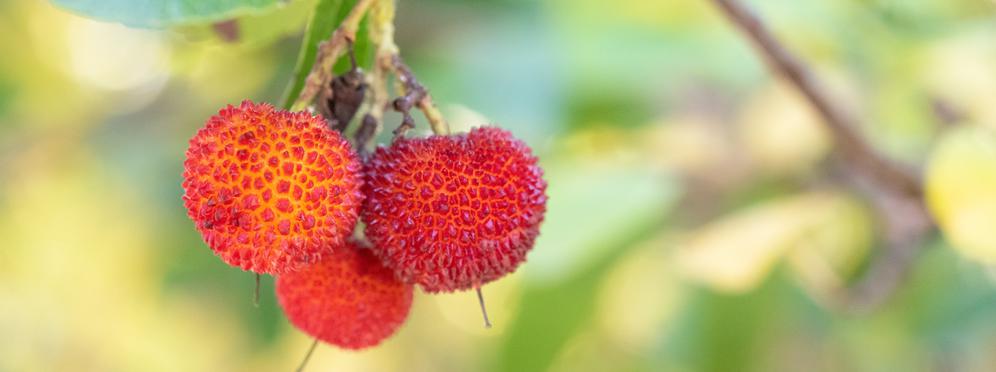Mediterranean maquis
This is the main vegetation along the Mediterranean coasts, where summers are hot and dry, and rain falls abundantly in winter.

This is the main vegetation along the Mediterranean coasts, where summers are hot and dry, and rain falls abundantly in winter. Maquis has now almost completely replaced the original evergreen woodland that was destroyed by thousands of years of cultivation. Once the ancient balance had been altered, evergreen woodland could not form again, as it does in areas with less dry summers, and was replaced by degraded vegetation (high and low maquis, garrigue) especially in low-altitude areas.
The Mediterranean maquis contains densely packed bushes, shrubs and evergreen trees with generally coriaceous leaves, occasionally deciduous during the summer, which therefore restrict their vegetative activity to more humid periods of the year. There are also lianoid, climbing plants, such as black bryony (Tamus communis L.), clematis (Clematis flammula L.), evergreen rose (Rosa sempervirens L.) and sarsaparilla (Smilax aspera L.), all the branches of which entwine, making maquis impenetrable.
A small portion of this environment was reproduced in the Botanical Garden by exploiting an area near the entrance, outside the enclosing wall and protected by the walls of the Museum from cold winds. Here grow the most important trees and shrubs of the Mediterranean maquis, such as wild olive (Olea europaea L. var. sylvestris Brot.), from which the cultivated olive tree (Olea europaea L. var. europaea) derives, mastic (Pistacia lentiscus L.), and dwarf fan palm (the same species which, in tree form, is called Goethe's palm). These plants grow in the warmest and driest coastal areas - extremely evocative natural environments now almost totally destroyed for tourist purposes. Other species are evergreen oak (Quercus ilex L.) and strawberry tree (Arbutus unedo L.) with white flowers and gaudy red fruit (in the past used to make jam), aromatic shrubs like myrtle (Myrtus communis L.), rockrose (Cistus salvifolius L., C. incanus L.), rosemary (Rosmarinus officinalis L.), lavender (Lavandula angustifolia Mill., L. stoechas L.), and shrubs with tiny leaves and flattened, photosynthetic stalks (cladodes and phylloclades), such as butcher's broom (Ruscus aculeatus L.).






